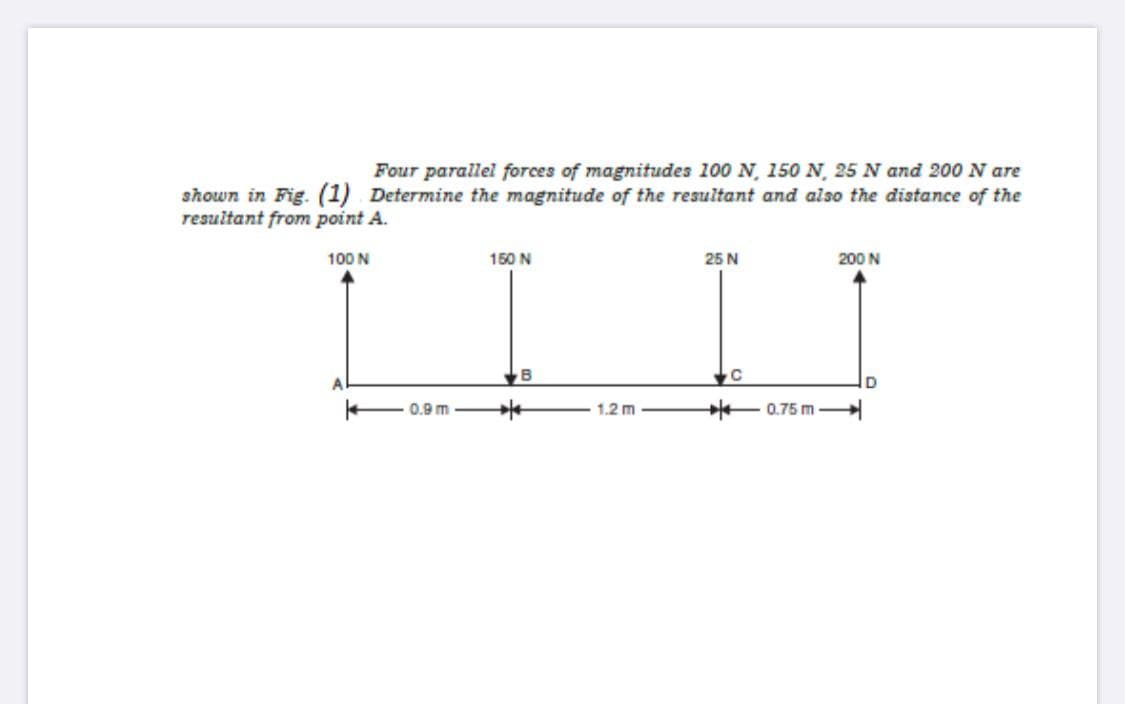Four parallel forces of magnitudes 100 N, 150 N, 25 N and 200 N are shown in Fig. (1) Determine the magnitude of the resultant and also the distance of the resultant from point A. 100 N 150 N 25 N 200 N B 0.9 m - 1.2 m 0.75 m
Four parallel forces of magnitudes 100 N, 150 N, 25 N and 200 N are shown in Fig. (1) Determine the magnitude of the resultant and also the distance of the resultant from point A. 100 N 150 N 25 N 200 N B 0.9 m - 1.2 m 0.75 m
Physics for Scientists and Engineers, Technology Update (No access codes included)
9th Edition
ISBN:9781305116399
Author:Raymond A. Serway, John W. Jewett
Publisher:Raymond A. Serway, John W. Jewett
Chapter5: The Laws Of Motion
Section: Chapter Questions
Problem 5.19CQ: Give reasons for the answers to each of the following questions: (a) Clan a normal force be...
Related questions
Topic Video
Question

Transcribed Image Text:Four parallel forces of magnitudes 100 N, 150 N, 25 N and 200 N are
shown in Fig. (1) Determine the magnitude of the resultant and also the distance of the
resultant from point A.
100 N
150 N
25 N
200 N
B
C
D
0.9 m
1.2 m
- 0.75 m
Expert Solution
This question has been solved!
Explore an expertly crafted, step-by-step solution for a thorough understanding of key concepts.
This is a popular solution!
Trending now
This is a popular solution!
Step by step
Solved in 2 steps with 1 images

Knowledge Booster
Learn more about
Need a deep-dive on the concept behind this application? Look no further. Learn more about this topic, physics and related others by exploring similar questions and additional content below.Recommended textbooks for you

Physics for Scientists and Engineers, Technology …
Physics
ISBN:
9781305116399
Author:
Raymond A. Serway, John W. Jewett
Publisher:
Cengage Learning

Glencoe Physics: Principles and Problems, Student…
Physics
ISBN:
9780078807213
Author:
Paul W. Zitzewitz
Publisher:
Glencoe/McGraw-Hill

Physics for Scientists and Engineers, Technology …
Physics
ISBN:
9781305116399
Author:
Raymond A. Serway, John W. Jewett
Publisher:
Cengage Learning

Glencoe Physics: Principles and Problems, Student…
Physics
ISBN:
9780078807213
Author:
Paul W. Zitzewitz
Publisher:
Glencoe/McGraw-Hill